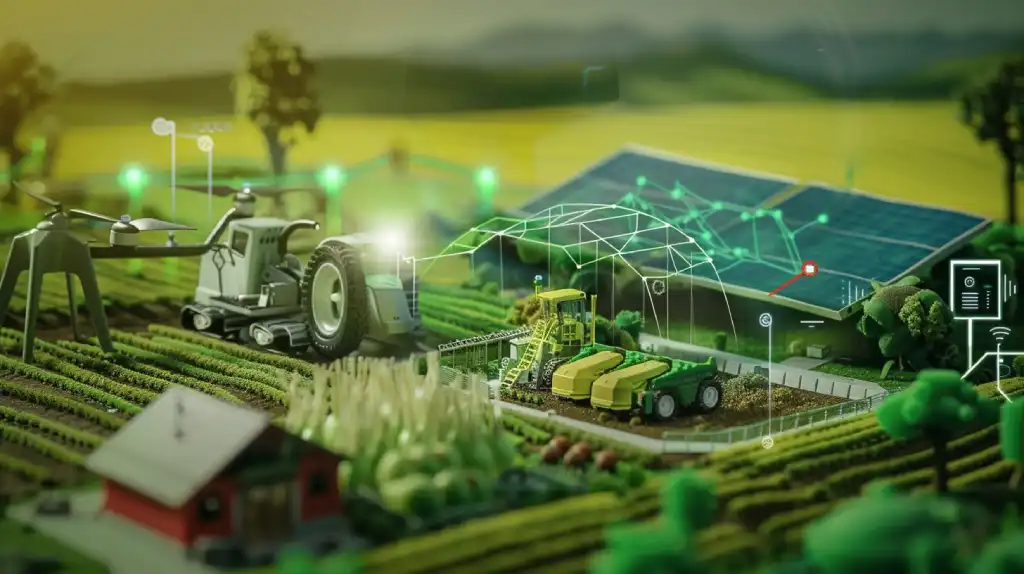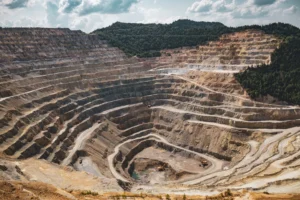The main goal of sustainable agriculture is to produce food and fiber while protecting the environment and securing the economic viability of farming for present and future.
Sustainable agriculture is crucial for our future, but many people are not aware of its importance. Did you know that conventional farming is responsible for 24% of global greenhouse gas emissions.
Shockingly, 75% of the world’s crop diversity has been lost since the 1900s due to industrial agriculture practices.
Soil erosion caused by traditional farming methods leads to the loss of 75 billion tons of fertile soil each year.
These alarming statistics show the urgent need to meet the goal of sustainable agriculture practices to secure our environment.
Goals of Sustainable Agriculture

The goals of sustainable agriculture cover a whole approach to food production. Sustainable agriculture targets to produce food and fiber while preserving the environment.
It supports farmers means of living and make sure that future generations can thrive. This involves using natural resources efficiently, reducing pollution, building strong communities, and promoting a healthy ecosystem.
By balancing environmental, economic, and social factors, sustainable agriculture seeks to create a lasting food system that supports both people and the environment.
The goals of sustainable agriculture are:
Protect the Environment
Sustainable farming means being kind to the Earth. This includes taking care of the soil, water, and air. Farmers can do this by:
- Protecting the soil: Planting different crops, covering the soil with plants, and avoiding things that wear down the land.
- Saving water: Stop water pollution by avoiding throwing waste in waterways and using water wisely, fixing leaky pipes, and growing plants that need less water.
- Cleaning the air: Reducing pollution from farms, using less chemicals, and planting trees.
Support Farmers
Sustainable agriculture hinges on the success of farmers. This means ensuring they can earn a decent living while caring for the environment. To achieve this, it’s crucial to:
- Pay farmers fairly: Farmers deserve to be compensated for their hard work and the essential role they play in feeding the world.
- Help farmers sell their products: Connecting farmers with buyers, both local and global, can boost their income.
- Invest in farmers: Providing financial support, like loans or grants, can help farmers improve their farms.
- Teach farmers new things: Sharing knowledge about sustainable farming and business can help farmers succeed.
- Improve rural areas: Building better roads, storage spaces, and processing plants can make it easier for farmers to get their products to people.
Enhance Food Security
Sustainable agriculture aims to make sure everyone has enough healthy food to eat. This means growing plenty of nutritious crops and raising animals in a way that keeps food safe. To achieve this, farmers must:
- Grow more food: Use better farming methods to produce higher yields without harming the land.
- Prevent food waste: Reduce the amount of food that gets lost or thrown away.
- Keep food safe: Protect food from contamination and spoilage.
- Make food nutritious: Grow crops that are rich in vitamins and minerals.
- Make food accessible: Make sure everyone can afford and reach healthy food.
Build Strong Communities
Sustainable agriculture goes beyond just growing food; it’s about building strong and fair rural communities. This means creating places where people want to live and work. To achieve this, we must:
- Support rural economies: Create jobs and businesses in rural areas to keep people from leaving.
- Invest in education: Provide quality education for everyone, so people have the skills to succeed.
- Improve healthcare: Make sure everyone has access to good healthcare, both physical and mental.
- Strengthen community bonds: Build a sense of belonging and support among neighbors.
- Protect the environment: Create healthy living spaces that people are proud to call home.
Sustainable agriculture is about using our natural resources wisely. This means being careful about how we use water, soil, and energy. We need to:
- Save water: Use water efficiently by fixing leaks, collecting rainwater, and choosing crops that need less water.
- Protect the soil: Avoid practices that wear down the soil, such as over-tilling. Instead, use methods that build healthy soil.
- Reduce and manage waste: Reduce the use of harmful chemicals and find ways to reuse or recycle materials.
- Use clean energy: Explore renewable energy sources such as solar and wind power to reduce our reliance on fossil fuels.
Importance of the Main Goal for Sustainable Agriculture
The purpose of sustainable agriculture is to create a farming system that can endure for generations. This goal is crucial as it tackles the need for food security, environmental protection, and economic stability.
By focusing on sustainability, we aim to produce food in a way that does not exhaust natural resources, harm the environment, or compromise the ability of future generations to meet their needs.
What is the Main Goal of Sustainable Agriculture

The main goal of sustainable agriculture seeks to balance food production with environmental conservation, economic success for farmers, and improved well-being for communities.
Regenerative agriculture, a subset of sustainable agriculture, takes this a step further by focusing on rebuilding and improving ecosystem health.
Meanwhile, e-farming, or digital agriculture, leverages technology to optimize agricultural practices, reduce waste, and increase efficiency, aligning perfectly with the broader goals of sustainability.
Strategies for Implementation
Implementing sustainable agriculture involves various strategies, such as adopting eco-friendly farming techniques, using technology, and promoting policy support.
Farmers can use methods like organic farming, agroforestry, and integrated pest management to achieve sustainability.
Also, governments and organizations can provide support through subsidies, training, and research to help farmers change to sustainable practices.
The Main Goal of Sustainable Agriculture: Measuring Success
To measure the success of sustainable agriculture, we can look at main indicators such as soil health, water quality, biodiversity, and economic performance.
Monitoring these indicators helps us understand the impact of sustainable practices and make necessary adjustments. By tracking progress, we can make sure that our efforts lead to real and lasting improvements in agricultural sustainability.
FAQ's
1. What is the main purpose of sustainable agriculture?
Sustainable agriculture aims to produce food while protecting the environment and supporting farmers and communities.
2. What is the main goal of sustainable agriculture?
The main goal of sustainable agriculture is to protect our planet’s resources, make sure farmers thrive, and improve community well-being, creating a stable and strong food system.
3. What are the challenges of sustainable agriculture?
Sustainable farming is hard to start because it costs a lot of money, and many people don’t know about it yet. Some farmers don’t want to change their old ways.




